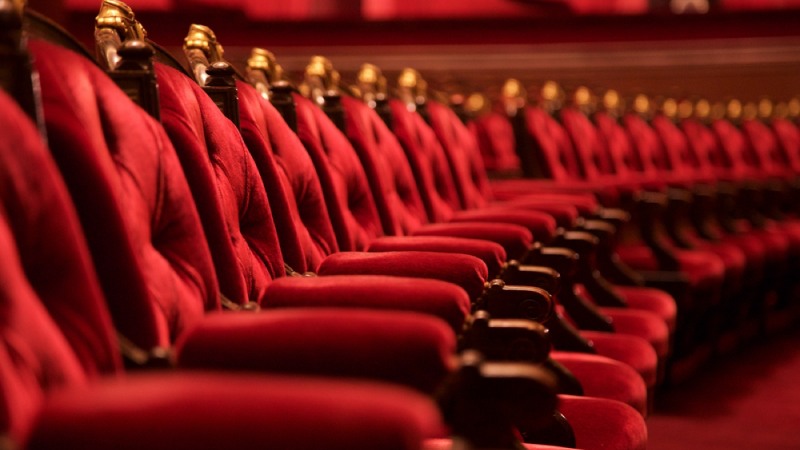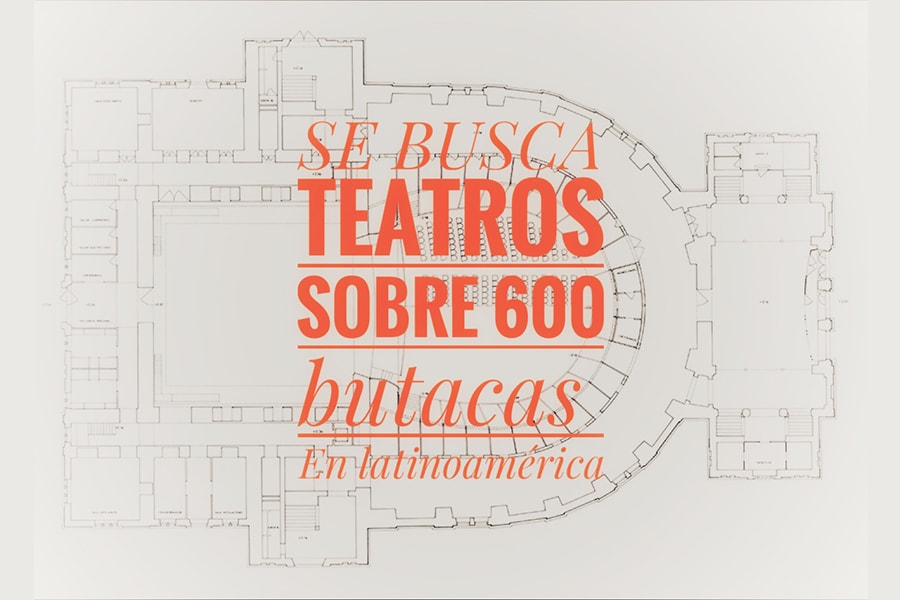Latin American digital audiences in pandemic

The Opera Latin America theaters association (OLA) together with eight Chilean theaters promoted a study of digital audiences in Latin America during the pandemic that sought to determine habits and project future trends in a hybrid scenario. The inquiry provides guidelines for management and programming based on the responses of people over 18 years of age in Chile, Argentina, Colombia and Mexico about their interest or disinterest in seeing performing and musical arts through digital platforms.
By Alejandra Martí Olbrich
Fourteen months of pandemic caused the theaters and cultural centers of hundreds of countries to jump on the digital train and make a vast offer available online. Operas, ballet, concerts, talks, master classes and workshops have filled our screens for months since the lockdown and the myriad of sanitary restrictions that we have experienced since March 2020.
With the passage of time, the high levels of visualizations, the prolongation of the pandemic and the changes in the habits of the population, the cultural sector began to consider a hybrid model of management and programming. A year after trial and error by these same organizations and companies, there are many conclusions that we draw and perhaps, even more, the questions that arise and that make us see opportunities and threats in this new ocean in which we must navigate.
In a recent study developed from Chile by the Opera Latin America theaters association (OLA) -in an unprecedented effort of associativity with 8 Chilean theaters, among them the Municipal Theater of Santiago, GAM Cultural Center, Matucana 100, Oriente Theater, Las Condes Theater , Vitacura Cultural Corporation, Maule Regional Theater and Biobío Regional Theater – sought to explore the digital audience market in Latin America during the pandemic, specifically in Chile, Mexico, Argentina and Colombia. The survey provides interesting data to analyze and that can give us insights in making strategic decisions, understanding that we are under a paradigm shift still in development.
The Digital Audiences Study, supported by a Pro-Chile fund, developed by the company StatKnows using machine learning, provided a type of probabilistic, stratified sampling, with allocation proportional to the size of the strata and selection in two phases. This allowed in a period of four days to carry out a survey of almost 4,000 people, which according to the methodology described represents the opinion of more than 160 million Latin Americans.
The objectives of the survey sought to have evidence of the perception of people over 18 years of age from Chile, Argentina, Colombia and Mexico regarding their interest or disinterest in seeing performing and musical arts through digital platforms. In other words, size the subpopulation that does show such interest, and characterize it according to various variables.
Know the digital and non-digital habits of the audiences
The input delivered is of a strategic nature both for the participating theaters and for OLA, the initiative’s driving force, as it seeks to contribute to an offer of theaters and cultural centers services capable of meeting the needs of current and potential digital audiences, taking advantage of opportunities for market in Chile and abroad. In addition, it provides guidelines for the sustainability of digital services and the cost-effectiveness of digital marketing efforts.
Through the study it was sought to know the non-digital habits and preferences of origin; digital habits and willingness to use platforms; face-to-face assistance and digital interest in music and performing arts; motivations and barriers for digital experiences; selection factors and additional content; extension preferences, days and hours; expectations of digital service and willingness to pay and information channels about the shows.
Of the 3,788 people surveyed with the first filter question about whether they were interested in seeing theater, dance, ballet, music, opera and circus shows through digital platforms, 85% answered yes. Group that then answered the full survey.
It is interesting to note that for the subpopulation that shows interest, the taste for music through platforms stands out widely, with 62%. Then follows the preference for family shows with 30%.
Among the main findings, it stands out that 51% of the digital audience declares that they have used general digital content distribution platforms to watch artistic and / or cultural shows; and 29% indicate having used the websites of theaters and cultural centers to view this type of content. Only 3% declare not having used platforms to watch shows.
Regarding the periodicity, the investigation establishes that since the beginning of the pandemic, 44.9% of the general digital audience has seen approximately between 1 and 3 times music concerts and / or performing arts shows using platforms. 36% of them are between 18 and 29 years old, above the relative participation of this age group in the general digital audience (29%).
The analysis of musical genre preferences shows a significant challenge for theaters dedicated to classical music, as 71% of the audience highlights their preference for popular genres, including pop, reggaeton and rock. A clear homogenization of tastes towards these genres is observed.
The threat of recommendation algorithms
Regarding the motivations for watching shows in digital format, the study found among the audiences a clear predilection for the consumption of shows in on demand mode, as reflected by the 44% who answered for this attribute, which contrasts with the form of consumption of shows in person. It is interesting to note that 42% declare they prefer these shows because they do not have access in face-to-face format, echoing the high digital audiences that we have seen from theaters in non-capital territories or that do not correspond to large urban centers.
Another revealing data is that 69% of those surveyed declare that they prefer online shows of less than one hour, an attribute that must be taken into consideration when discussing the duration of artistic creations for the online format.
Regarding the way they are informed, it is interesting that the majority of viewers (67%) tend to find out about the shows through word of mouth, characters or influencers, web pages of the same centers that follow through social networks, versus the minority (19%) that is informed by traditional means of press, TV and radio. These are trends that have as their background the threat of recommendation algorithms, as a series of experts have already warned, joining the debate raised by the documentary The social dilemma. The cultural sector does not have high budgets to invest in digital marketing and its efforts risk being diluted in the cloud.
Not less is the challenge of the sustainability of these programming models. The willingness to pay does not seem to be a great impediment for these digital audiences, since 86% declare that they are willing to buy a ticket, the value of which is close to a movie ticket, which raises hopes for the sustainability of the new models.
One of the tasks derived from the analysis is to establish how often the viewer is willing to pay, taking as a reference the monthly payment of the audiovisual platforms. This factor is decisive for becoming globally competitive and reaching international and borderless audiences who said they are interested in consuming digital shows.
In the global digital market, the competition is radical. Platforms such as Netflix or Disney Plus -among many other giants- compete for viewers’ free time. The stage is therefore a challenging adventure for a solo theater. To move forward it is necessary and urgent to work together with the support of the State as a sector coordinator and promoter, and the private world that is committed to innovation in the sector.
OUTSTANDING PHRASES:
– With the passage of time, the high levels of visualizations, the prolongation of the pandemic and changes in the population’s habits, the cultural sector began to consider a hybrid management and programming model.
– The study is strategic both for the participating theaters and for OLA -organization driving the initiative- as it contributes to articulate an offer of theaters and cultural centers services capable of satisfying the needs of current and potential digital audiences.
– The analysis of musical genre preferences shows an important challenge for theaters dedicated to classical music, since 71% of the audience highlights their preference for popular genres.
– The willingness to pay does not seem to be a great impediment for these digital audiences, since 86% declare that they are willing to buy a ticket.
*Alejandra Martí. Executive Director of the Association of theaters, Latin American Opera, OLA, and Digital Scene. Graduated in Humanities, postgraduate in Business Administration from Pompeu Fabra University in Barcelona and Master of Business Administration from ESE Business School.
She began her career in the management of the performing arts at the Gran Teatro del Liceo in Barcelona in 2004. She then worked for 11 years at the Municipal de Santiago as Director of Institutional Development. Through national and international scholarships, she has carried out internships in important theaters in the USA, Europe and Latin America, studying artistic, educational, marketing and digital communication projects.Since 2017 she has been the Executive Director of OLA and co-founder of the Digital Scene marketplace. . She is the National Councilor for Culture of the Ministry of Cultures, Arts and Heritage of Chile.



